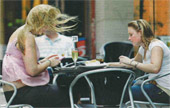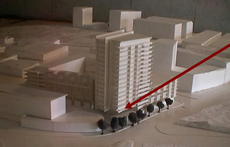Wind Environment Studies

Case Study Example
A side-stream wind effect was found to be impacting a proposed outdoor dining area. A treatment solution to mitigate this adverse effect included the addition of a free-standing canopy at the corner of the undercroft area. This was able to deflect the downwashed side-streams, while the introduction of street tree planting provided protection from incident ground level winds affecting the area.
The importance of a safe and comfortable wind environment in the vicinity of new buildings is now acknowledged by project managers and architects alike. Developers are also beginning to realise the economic benefits in ensuring a favourable wind environment in areas that involve commercial activities. Wind tunnel testing is the best means of predicting and alleviating wind problems around urban structures.
Wind tunnel data is computer processed and compared with recommended wind acceptance criteria. These criteria focus on activities that may occur about a building such as, pedestrian movements, window shopping, or sitting in courtyards/terraces or outdoor restaurants/cafes.
Where unacceptable wind conditions are found to occur, remedial measures are recommended and the proposed solutions are incorporated into the model and tested in the wind tunnel to obtain a definitive result. Treatment options include:
- Strategic Planting of trees / shrubs
- Strategic placement of awnings / canopies
- Erection of screens / baffles
- Efficient design of airlocks
- Adjustment to the building form
- Combinations of the above
In addition, WINDTECH Consultants has a policy of providing innovative solutions to ensure that the design intent of the architect is not compromised.



